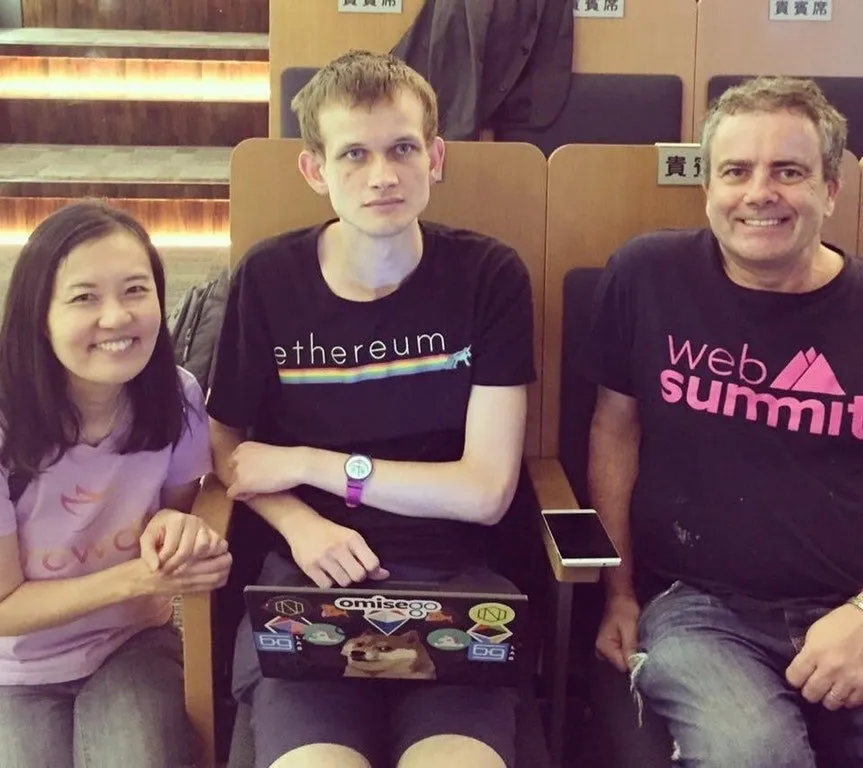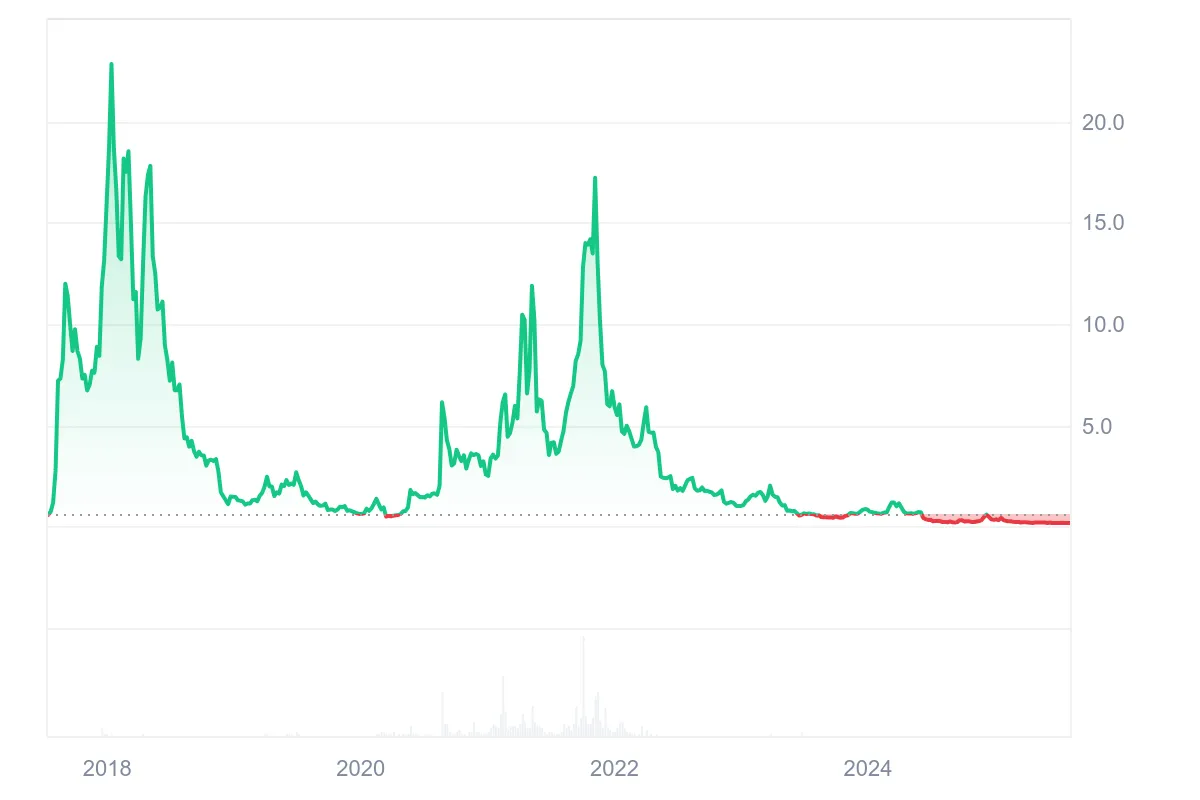
Contents
- 1. Key Takeaways
- 2. What is OMG Network?
- 3. OmiseGo & OMG Network History and Team
- 4. How Does the OMG Network Work?
- 5. What is the OMG Token?
- 6. What are Some Alternatives to OMG Network?
- 7. What Is OMG Network Criticized For?
- 8. What are some projects built on OMG Network?
- 9. Does OMG Network Have a Future?
- 10. Conclusion
Despite an absolute lack of news for years now, OMG Network remains an important chapter in Ethereum’s history as an implementation of the Plasma technology. What is OMG Network, how could it help Ethereum and what is known about the project — in this article!
Key Takeaways
- OMG Network was rebranded in June 2020, previously it was known as OmiseGo. In December, 2020 Genesis Block Ventures started the project acquisition process;
- OMG Network is a Plasma implementation, a Layer-2 scaling solution for Ethereum. The solution developed for the project is called MoreVP. It is a child chain that processes transactions in batches and refers them back to smart contracts on the parent chain (Ethereum) for validation;
- The native OMG Network cryptocurrency, OMG token can be used as a means of payment;
- As of 2025, the OMG Network project is essentially abandoned. The only activity the OMG token sees is trading on exchanges, not unlike a meme coin with no fundamentals.
What is OMG Network?
OMG Network (previously OmiseGo) is a Layer-2 solution built to scale the Ethereum network. It is non-custodial and lets users transfer ETH and ERC-20 tokens faster and cheaper than on the Ethereum network directly. For example, the OMG Network can process thousands of transactions per second compared to Ethereum’s transaction limit of 10–14 tps. By making the transactions faster and more lightweight, the general cost of operation is decreased as well.
OmiseGo & OMG Network History and Team
OMG Network, initially called OmiseGo, was founded by Jun Hasegawa in 2017. The project skyrocketed to prominence thanks to a photo of Vitalik Buterin with the brand sticker on his laptop, which was taken as indirect endorsement.

The photo of Vitalik Buterin with his laptop in question
In 2020 the OmiseGo team broke the news that the project was acquired by Hong Kong-based OTC trading firm Genesis Block and rebranded to OMG Network.
OMG Network’s objective is to build a financially inclusive and accessible payment rail on the blockchain. The firm also plans to create decentralized finance solutions on the OMG Network.
How Does the OMG Network Work?
From a technical standpoint, OMG Network is an implementation of Ethereum’s Plasma. It serves as a child chain to the ETH network. The relation between the parent and child chain is governed through smart contracts. The OMG Network uses an iteration of Plasma known as MoreVP (More Viable Plasma).
The OMG Network V1 Mainnet Beta uses the More Viable Plasma specification to increase the processing capacity of Ethereum. MoreVP trustlessly scales ETH and ERC20 transactions by grouping them up and sending them to Ethereum for confirmation. Processing batched transactions enables high throughput and significantly lower-cost transactions for the end-user.
The OMG Network V1 Mainnet Beta relies on the security properties of Ethereum and a decentralized watcher network. Both mechanisms verify and validate every transaction, preventing malicious actors from stealing funds.
The OMG Network is also trustless. Trustless means users can recover their funds even if the OMG Network is inaccessible or fails. This is because your tokens are deposited on Ethereum and never leave it, meaning users can withdraw their funds by directly communicating with the root chain.
Transactions on the OMG Network look like this:
- Layer one: Ethereum, smart contracts and entry/exit points;
- Layer two: MoreVP, a child chain that handles transactions and sends blocks to Ethereum for verification;
- Watcher network: another layer of OMG Network, through which anyone can observe the fairness of operations on the chain.
To send a transaction via OMG Network, you would need to deposit ETH of ERC-20 tokens to the smart contract. This deposit is recognized by both Ethereum and OMG Network, but the following transactions are registered only on the latter. The Operator bundles a transaction with others in a block and sends its hash to Ethereum for validation. When you are done, you can withdraw the assets from the smart contract, even if OMG Network goes offline.
What are the benefits of using OMG Network?
Summing up the previous sections, the benefits of OMG Network as a L2 are obvious:
- Less friction—higher speed and lower fees than natively on Ethereum;
- Secure as Ethereum;
- Sufficiently decentralized and trustless—funds never leave Ethereum.
What is the OMG Token?
What is the OMG crypto token, previously known as OmiseGo? Being a Layer-2 Ethereum scaling solution, it is logical that OMG is an ERC-20 token. OMG is supposed to be used as a means of transacting within the network. In the original design, OMG acted as a currency-agnostic intermediary for the on-chain DEX. In more recent iterations of the network, it is also used to secure the network by staking.
OMG Price

Source: CoinMarketCap
In ICO held on July 23, 2017, OMG was sold for $0.2283 per token. OMG entered the market during a rally and on January 8, 2018 reached its current ATH: $28.35. In 2018 the cycle shifted into a bear market, and OMG price entered a downtrend which lasted for two years.
The 2020–2022 bull run in the crypto market saw another huge splash in the OMG markets. A past OMG coin price prediction by the ChangeHero team should be a good indication of the optimism that surrounded the crypto network in its heyday.
However, after that, as the project stalled, it comparatively flatlined after 2023. Nevertheless, there is still enough trading volumes to support price action. OMG trading is not unlike flipping a meme coin with no fundamental value, which is a trend many dead coins that used to be big seem to follow.
At the moment of writing, OMG Network price is $0.1815.
Where can I use the OMG Network?
A number of vendors online also accept OMG tokens as a payment. The gateways such as Coinify and CoinGate let merchants accept OMG.
How do I Trade OMG Network?
Regarding the question “How to trade OMG network as a beginner?”, our financial analyst Alexander has a few words of caution:
If you need a guide on how to start trading OMG Network, it might be out of your league. As it is right now, OMG is a meme coin, which I would not recommend for beginners. Its price is moved by pure speculation, and without solid knowledge of technical analysis, you are unlikely to make any money, as opposed to more valuable digital assets that at least have a driving force growing their value in the long term.
What are Some Alternatives to OMG Network?
Other Plasma iterations were developed by the Polygon (previously Matic Network) and Gluon teams. How does OMG Network compare to other scaling solutions?
Matic Network utilizes a Delegated Proof-of-Stake consensus algorithm, in which chain operators are stakers and delegators. MATIC token also has a role in governance and is wired more to work within the dApp ecosystem, and since its migration to POL is even more deeply integrated within its network.
Gluon’s L2 token is primarily used in staking and governance. Unsurprisingly, it seems to not be doing better than OMG on all accounts, be those markets or recognition.
What Is OMG Network Criticized For?
Even Vitalik Buterin is vocally supportive about OMG Network, but you can never please them all.
All Plasma implementations have been criticized for being partially centralized. The sidechain that mirrors Ethereum and handles transactions by design is similar to standard (and centralized) payment processors like Visa. In OMG Network’s case, this design flaw is mitigated by having a decentralized network of watchers controlling the Operator.
However, those were the criticisms that the OMG Network project faced when it was still a thing. The current most prominent issue with the project is it has not shown any signs of life in years. The website is no longer accessible and the socials are either abandoned or deactivated. The main culprit is Boba Network—the newer project by the same team that they moved on to. For the time being, it seems to be active and continues to build what OMG Network set out to do.
What are some projects built on OMG Network?
Who are the major players in the OMG Network ecosystem? Or at least, who were the best-known names in the club?
The primary adopter was the namesake, the Thai payment processor Synqa, which at the time of the project’s unveiling was known as Omise (hence OmiseGo). They used the blockchain infrastructure to facilitate digital payments, albeit on an experimental scale.
Another key player was blockchain company Enya which in collaboration with the OMG Foundation oversaw the development. They funded and provided services such as node hosting, monitoring and maintenance.
Other blockchain projects have leveraged the Plasma-powered L2 for lower latency and friction, such as decentralized computing marketplace Golem.
Does OMG Network Have a Future?
The question in the title is a tricky one, given that OMG Network arguably has no present either. Despite the team and backers moving on to Boba Network, the token was not wound down and is essentially in the hands of the community now, at least, partially.
For better or worse, this is one of core ideas behind cryptocurrencies in play: decentralization plus permissionlessness means that no one can do anything with your tokens but yourself. Traders choose to continue trading OMG, despite its fundamental value being basically gone.
This is not a unique case: the meme coin explosion in 2023, led by PEPE and the like, has shown that proving your coin has any fundamental value is no longer necessary. Trading these tokens is grounded in pure unadulterated speculation, as opposed to committed investment, which is not to say is wrong or bad.
Another example of a coin that outlived its project is Celsius (CEL). After the company’s bankruptcy, its native token would no longer provide the same utility and value but it did not cease existing either. So, traders took it into their own hands to keep the charts going, and rather successfully, one might say.
As a result, the OMG coin might have a similar future: a token best used for speculative trading, divorced from a project that did not succeed.
Conclusion
A complete lack of current OMG Network news notwithstanding, the crypto coin seems to be more alive than dead. As a working Plasma implementation, it served as an important stepping stone in Ethereum’s history.
Did you find this OMG guide for beginners useful? Share it with your friends on social media: we’re on X, Facebook, and Telegram. Check out more educational content on all things crypto in our blog!
Frequently Asked Questions
What exchanges list OMG Network?
Where can I buy OMG Network tokens and how to do it? According to CoinMarketCap, the available markets to trade OMG today are on Bybit, Bitget, Kucoin, Gate, and Kraken.
What are the fees for using OMG Network?
There is currently no publicly available information on the live OMG Network fees. A commonly-cited estimation for OMG fees in comparison to Ethereum is one-third of the native layer, which would make it $0.03–0.2 per transaction.
Which wallets support OMG Network?
As a ERC-20 token, OMG can be imported to any blockchain wallet that supports Ethereum tokens. No extra action is needed to store and manage OMG in Exodus and Arctic Wallet. For cold storage, Trezor supports OMG on Ethereum and Boba Network.






